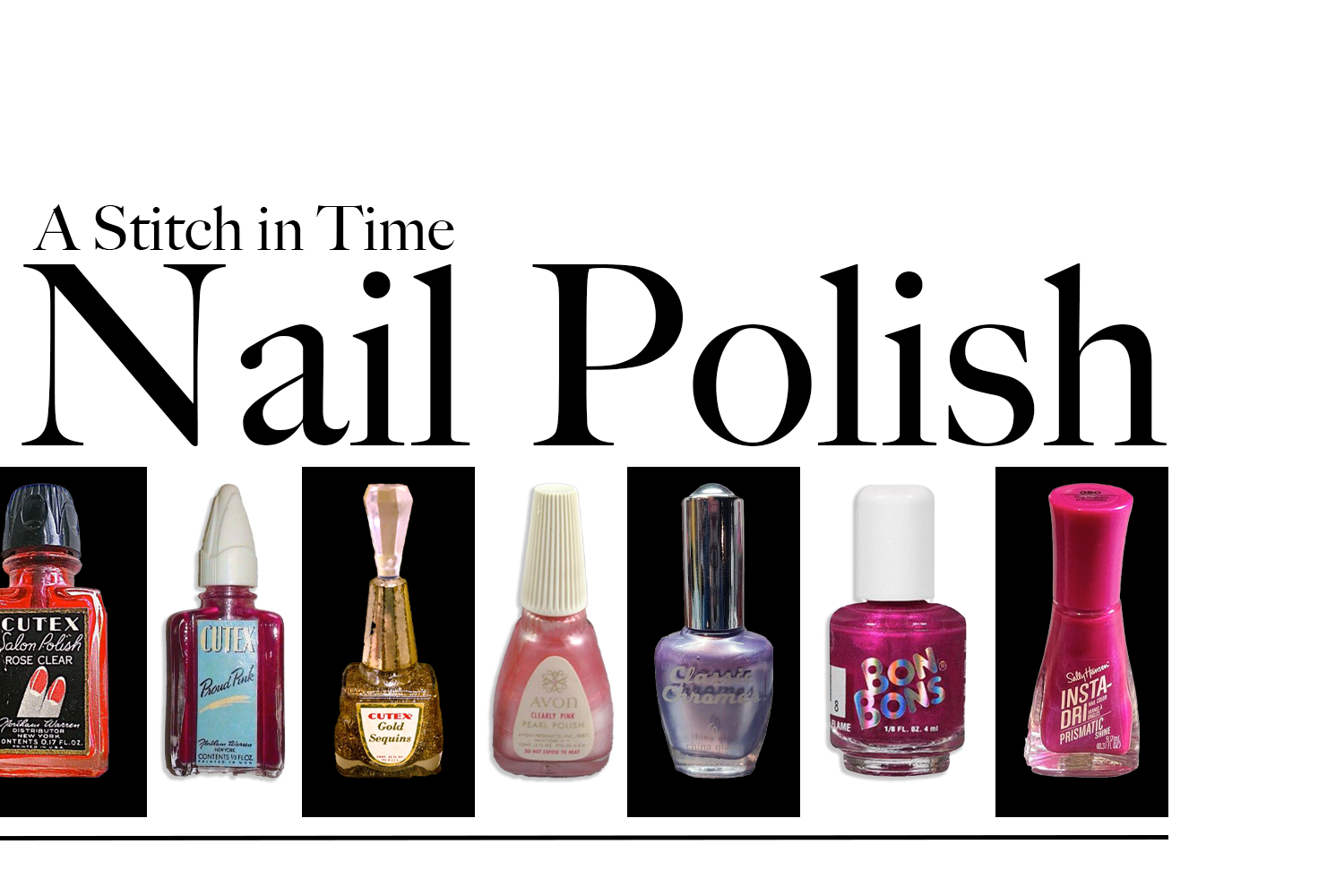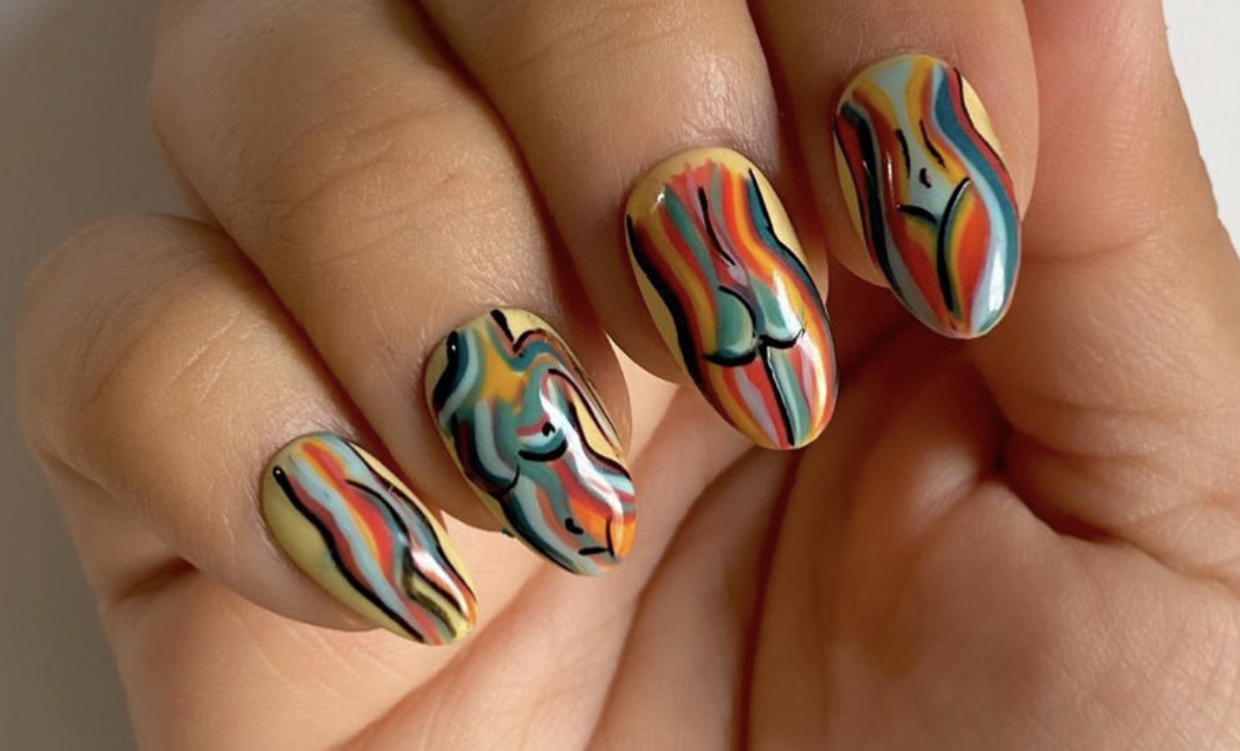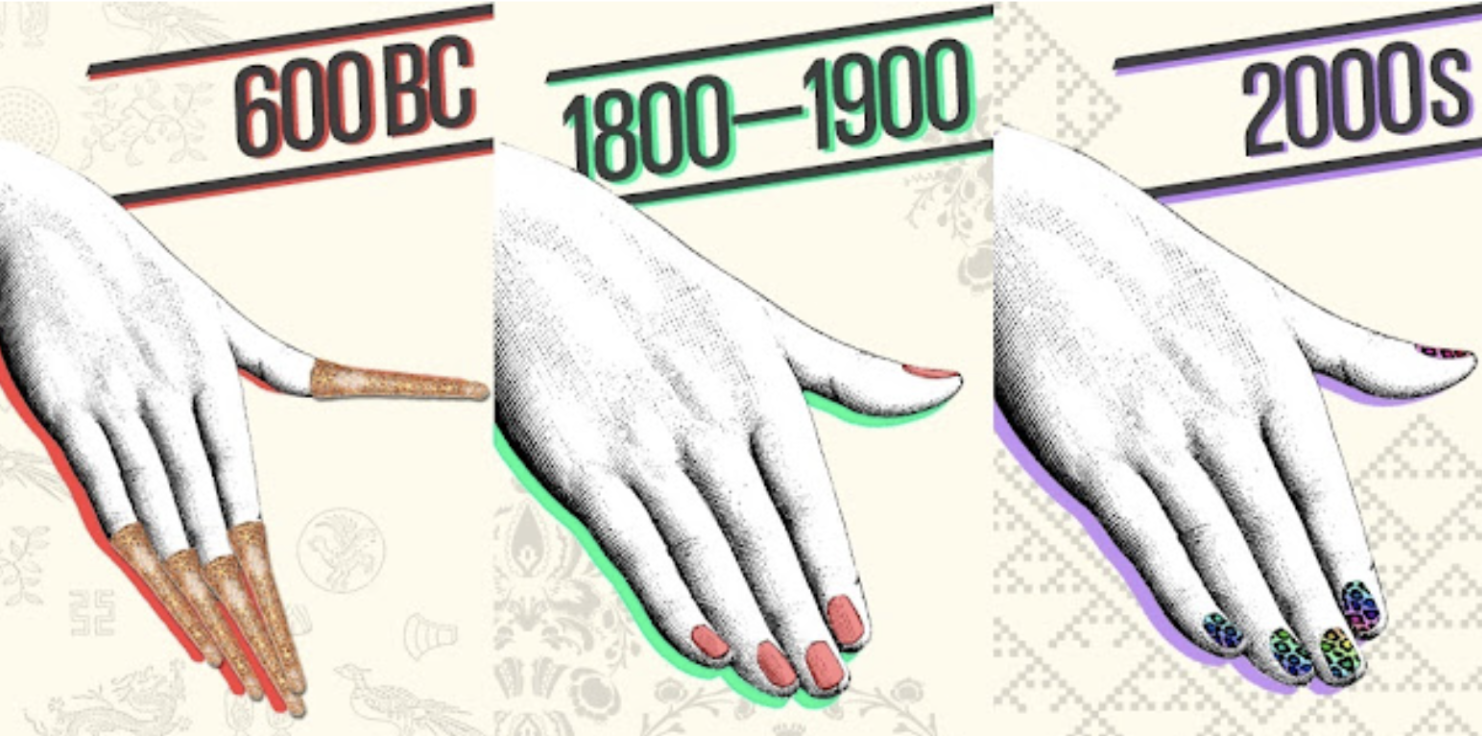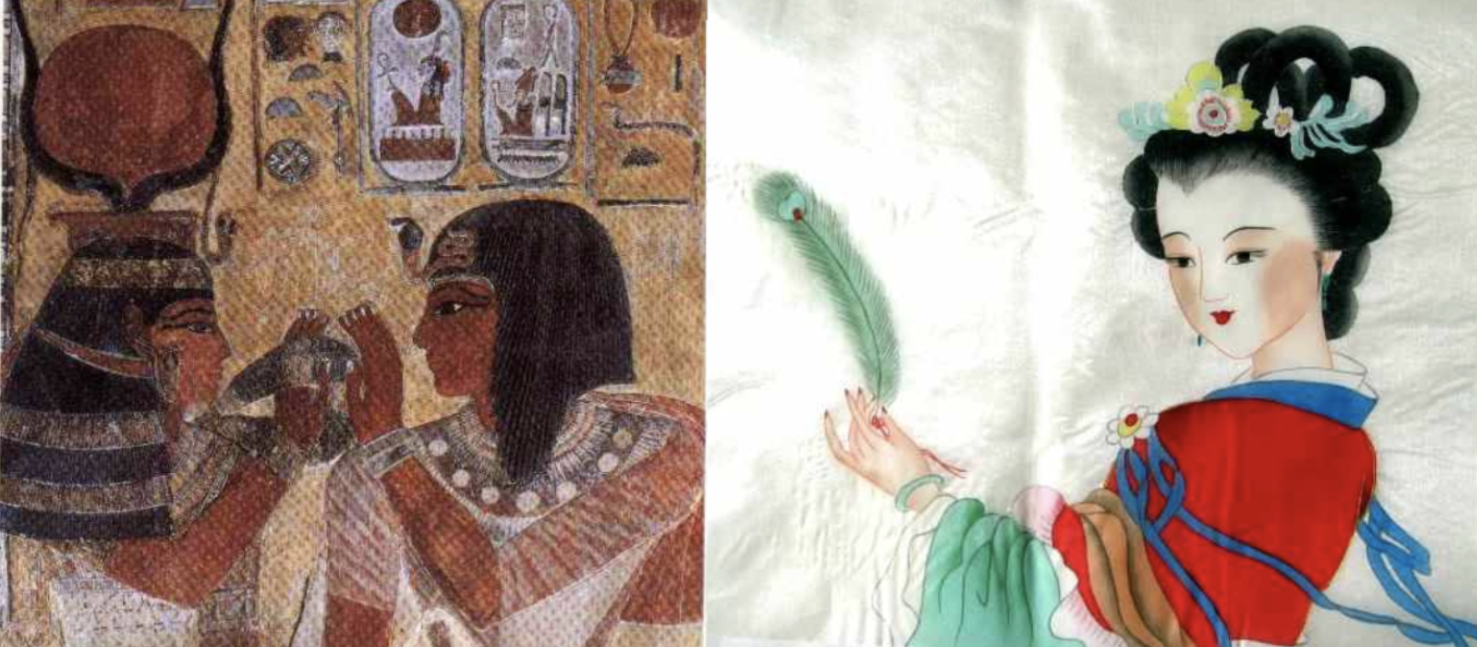A Stitch in Time: Nail Polish
Graphic by Ruth Ellen Berry.
It’s not the first thing you notice about a person, but it is definitely second or third. Nails! The perfectly shaped tiny artistic canvases are things to admire. In the crowd of acrylic, colored french and basic neutral tips, nail art is a self-expression that is accessible as much as it is subtle.
Photo courtesy of OPI.
I can remember scavenging through the cabinets under my mother’s bathroom sink as a small child, through extra toilet paper rolls, small bottles of lotions and wires of straighteners and curlers to find her small box of nail polish. At the time, I wondered how she could have built such a collection! There was every color imaginable in that box, and I was so excited to choose mine. Purple. I took the polish and some of the nail tools left in the box back into my bedroom and started working away. Purple was the color of my newly polished nails, and my hands, the carpet, the curtains and wall. I don’t think we ever got the purple out of the curtains.
While I now go to a salon to treat myself to newly colored nails, the rush of excitement to commit to a color or style, however temporary, remains. I’ll look up styles going into the salon, and come out with a newfound confidence. In the same way a significant other pays for a meal out or an activity on a date, people have begun paying for their partner’s nails as a symbol of affection. I find this quite beautiful.
Nail polish has always been a love of mine, from the art project started under mom’s bathroom sink to first dates and interviews, the subtle self-expression has always been a silent statement to the world about who I am. In honor of the creativity and confidence that polish provides, I took a deep dive into the history from which nail polish originates.
Photo courtesy of Refinery29.
After research into historical records, I realized that no one can agree how, when or who created nail polish. Archeologists have discovered Egyptian mummies with henna-tinted fingertips and gilded nails dating back to 5000 BC. Babylonian men were discovered with golden manicures as part of unearthed combat equipment around the same time, while Indian women were staining their nails with henna. In 3000 BC, Chinese women tinted their nails reddish pink using a combination of egg whites, gelatine, beeswax and dyes from flower petals. Around 600 BC, Chinese noblemen and women from the Chou Dynasty grew hyper-long nails, using bejeweled nail guards to mark their wealth and social status as unwilling and unable to do hard labor. The tradition of red colored nails has continued on, as my grandmother has had painted red nails for the entirety of the time I’ve known her. I don’t think I’ve actually ever seen her without nail polish on.
Photo courtesy of Discovery.
Nail art, including colors and length, have long been the focus of racial discrimination, classicism, political issues and human rights discussions. As famous black athletes, like Olympian Florence Griffith Joyner and Serena Williams—one of the greatest tennis players of all time—are pushed into the public eye for their achievements, the media has continuously labeled on their long or colorful nails as “rule breaking,” while the white, heteronormative standards of beauty in French, short and pastel colored nails are accepted within dress codes. Furthermore, going to a nail salon had long been a practice of the wealthy, until the recent implementation of more accessible nail bars. Even so, there is a shocking link between nail bars and human trafficking, as reported by Kevin Hylan UK’s former anti-slavery commissioner, in 2017. Many migrants without documentation are vulnerable to trafficking in nail bars because the industry is largely unregulated. Nail polish and art cannot be dismissed as frivolous. The industry is intrinsically linked to the larger ways in which society functions as a whole.
Photo courtesy of Bejazzled by Jazz on Instagram.
Nail polish will remain splattered across walls, on carpets, bought in “treat yourself” moments, as gifts for a partner and in a deep red on my grandmother’s nails. So, take time to inspect your manicure: the colors awaiting you on the wall of the salon as well as the inherent social, cultural, racial and political discussion bound to your hands.





